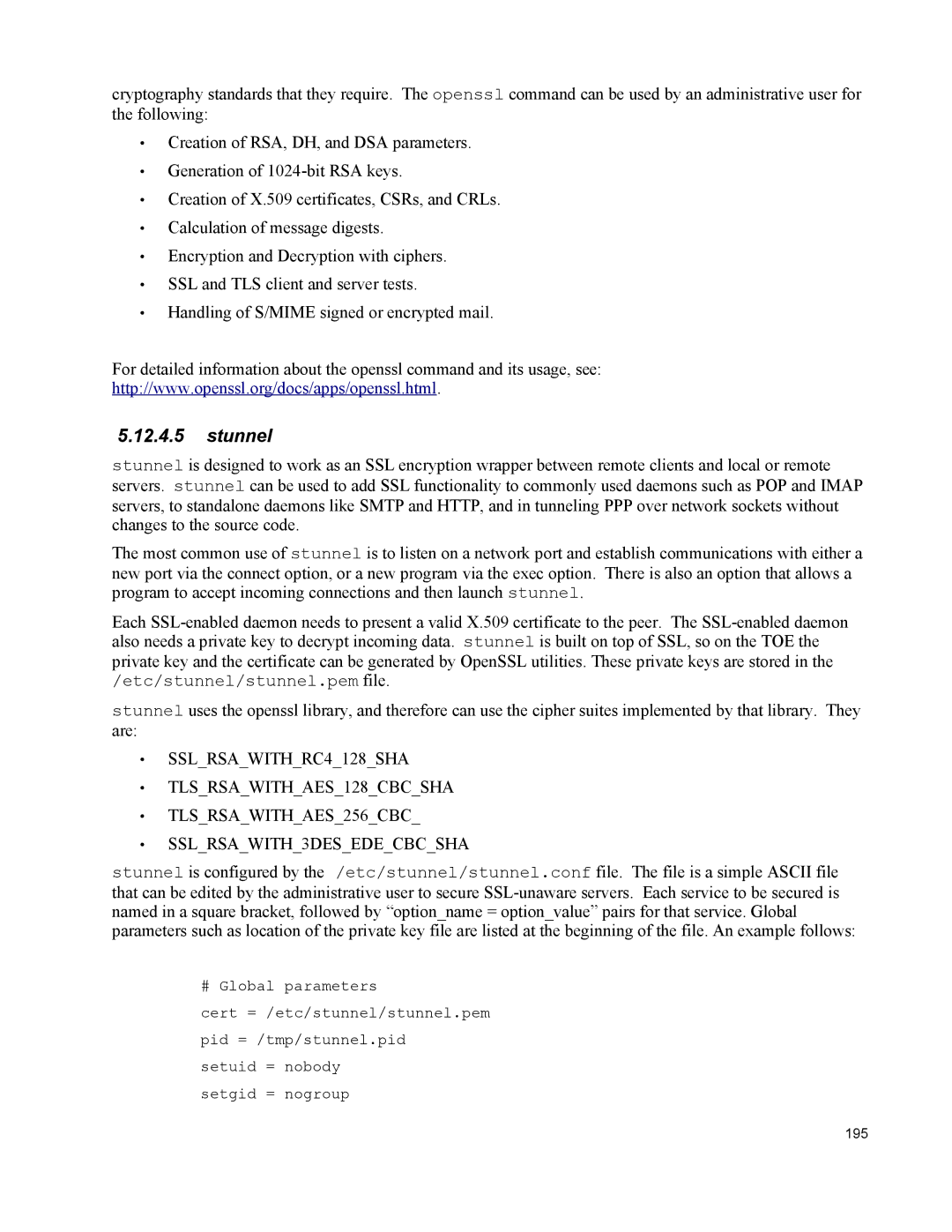cryptography standards that they require. The openssl command can be used by an administrative user for the following:
•Creation of RSA, DH, and DSA parameters.
•Generation of
•Creation of X.509 certificates, CSRs, and CRLs.
•Calculation of message digests.
•Encryption and Decryption with ciphers.
•SSL and TLS client and server tests.
•Handling of S/MIME signed or encrypted mail.
For detailed information about the openssl command and its usage, see:
http://www.openssl.org/docs/apps/openssl.html.
5.12.4.5stunnel
stunnel is designed to work as an SSL encryption wrapper between remote clients and local or remote servers. stunnel can be used to add SSL functionality to commonly used daemons such as POP and IMAP servers, to standalone daemons like SMTP and HTTP, and in tunneling PPP over network sockets without changes to the source code.
The most common use of stunnel is to listen on a network port and establish communications with either a new port via the connect option, or a new program via the exec option. There is also an option that allows a program to accept incoming connections and then launch stunnel.
Each
stunnel uses the openssl library, and therefore can use the cipher suites implemented by that library. They are:
•SSL_RSA_WITH_RC4_128_SHA
•TLS_RSA_WITH_AES_128_CBC_SHA
•TLS_RSA_WITH_AES_256_CBC_
•SSL_RSA_WITH_3DES_EDE_CBC_SHA
stunnel is configured by the /etc/stunnel/stunnel.conf file. The file is a simple ASCII file that can be edited by the administrative user to secure
# Global parameters
cert = /etc/stunnel/stunnel.pem pid = /tmp/stunnel.pid
setuid = nobody setgid = nogroup
195
